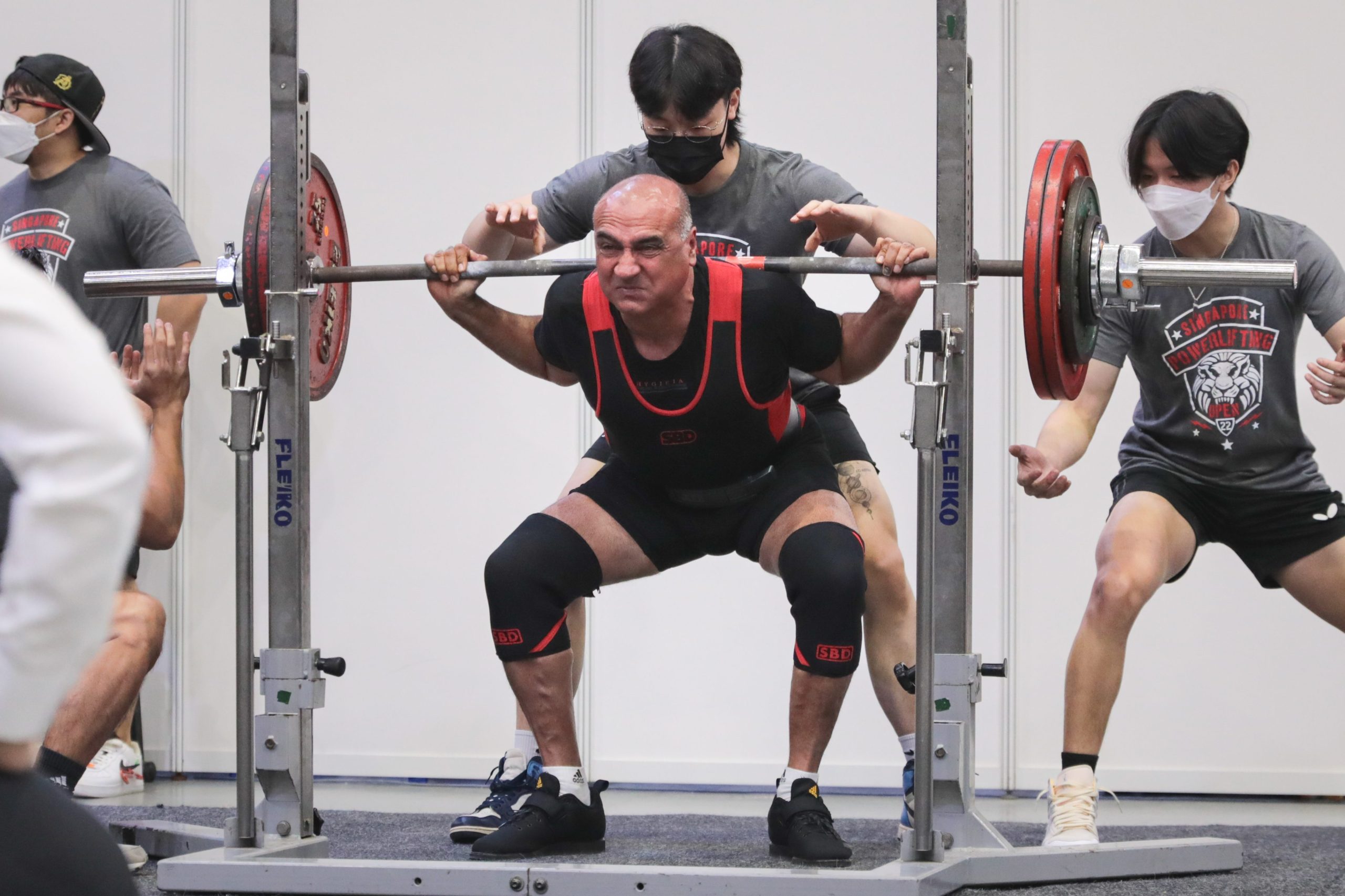
How do you get back up from the bottom of a squat?
Apart from a powerful concentric contraction of the muscles of your hips and legs, utilising a rebound can come in very handy when standing back up from the bottom of a squat with a heavy barbell on your back.
From watching many squats over the years, I’ve noticed that there’s a very common tendency for lifters to speed up on the descent, specifically when approaching the bottom of the squat. Typically, at the beginning of the set, lifters will start descending at a consistent and controlled pace. As the set progress and the lifter starts to get fatigued, they’ll speed up on the last 1/3 to 1/4 of the way down in an attempt to create a “bounce”. Sometimes, this happens from the first rep.
However, going faster isn’t the key to getting a strong rebound, even though it feels instinctive.
Here’s why you shouldn’t speed up to “get a bounce”.
By relaxing muscles, you lose tightness
When you go down fast(er), you’re going to have to relax some muscles to do so. Now, this is probably unconscious; try keeping everything tight and dropping quickly to the bottom – you’ll find that it’s practically impossible.
Why is it important to stay tight throughout the entire set of squats? Because you’re pushing against a heavy barbell on your back. By staying tight, the force generated by your hips and legs is transmitted more efficiently to the bar.
Also, if you start tight, but relax a little to speed up, then you’ve got to tighten up again at the bottom in order to push back up against the weight. Lose that tension, lose your efficient force transmission. Staying tight is your friend when lifting weights, especially so when it gets heavy.
Another thing that happens when you relax to descend faster is that it’s harder to stay in control of the weight. The bar may drift forward of your midfoot, which can throw you off balance, making the rep harder than it needs to be.
Speeding up to change direction is inefficient
A quick physics lesson. When you increase your speed on the way down, you’re accelerating. Remember Newton’s Second Law of Motion, or force = mass x acceleration? When you accelerate downwards, the downward force increases.
If you’re only going in one direction, this isn’t a problem. But because you’re trying to change direction and go back up, you need to produce an opposite force to decelerate the bar at the bottom.
This is called an “impulse”, defined as the change in momentum produced by force. In other words, if an object changes speed, then its momentum changes. Impulse is calculated as force over time, i.e., the faster you change your momentum, the more impulse you need.
This means that if you’re moving faster, you’ll need to generate more force to change direction to stand back up. This is why we also discourage “dive bombing”, where the lifter looks like they literally drop from the top to the bottom of the squat.
Focus on the rebound, not your speed
So is there a “bounce” that helps you rebound off the bottom of the squat? Yes there is, and it not because you sped up at the bottom but because of the stretch reflex, which is a muscle contraction in response to a stretch.
As you descend, the muscles of your hips and knees flex and contract eccentrically. When the muscle fibres are being stretched, the muscle spindle sends a signal to resist whatever is stretching said muscles. In addition to that, the stretch tells the neuromuscular system that a strong concentric contraction is about to follow.
At the bottom of a correctly executed squat, at just below parallel, the stretch reflex is what contributes to the “bounce” that we’re talking about. As you can see, the bounce doesn’t have much to do with how fast you descend.
In fact, you shouldn’t be thinking about getting the bounce. It will occur when you focus on driving your hips up as you descend.
One way is to think about coming up faster than you went down. Now, with a heavy weight on your back, you won’t actually come up much faster but you want to try your darndest to do so.
How do you know when you’ve got the rebound right? You’ll know it, because you’ll be able to feel it.
Can you descend too slowly?
Yes, you can.
When you go too slow, your stretch reflex isn’t as pronounced. A correctly performed stretch reflex can aid tremendously in the concentric portion of the squat. Want to find out how much the stretch reflex helps? Try doing a pin or paused squat and you’ll see what I mean.
Additionally, you need to put in more effort to slowly control the descent – your muscles are spending more time under tension, which increases fatigue.
That said, we do program lifters to go slow sometimes – getting them to take a few seconds to descend and/or ascend. These are called tempo squats and are used as a squat variation – usually to fix certain technique issues or to increase training stress without additional loading.
If you’re doing “normal” squats, there’s just no benefit to squatting really slowly.
The Goldilocks principle: finding “just right”
The speed to descent in the squat is a fine balance. Going too fast or too slow will create problems. It’s the Goldilocks principle, where we’re looking for a “just right” speed that to get a strong stretch reflex.
So how fast or slow should you be? Unfortunately, this is a case of “I’ll know it when I see it”. So video your squat, review it and self-diagnose. If you still don’t know what to look out for, it might be a good idea to hire an expert eye to fix your squat.

